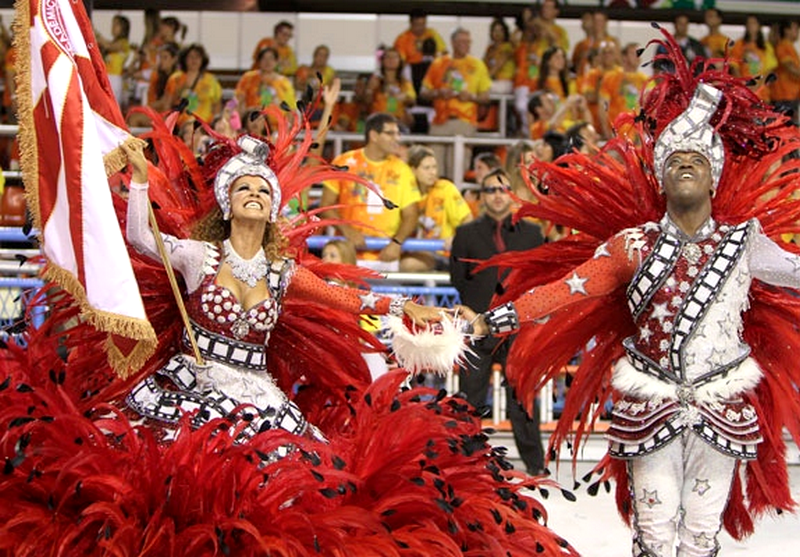Salgueiro: a different Samba School
On a hill that made history before earning its definite name, one of the greatest institutions of Rio’s Carnival was born. Acadêmicos do Salgueiro samba school is a pioneer and revolutionary in many ways, with more than nine victory titles.
The Salgueiro Hill has always been respected by its samba and carnival parties. When samba schools appeared, three were formed there: Unidos do Salgueiro, Azul e Branco, and Depois eu Digo; none of them strong enough to face Portela, Mangueira, and Imperio Serrano samba schools. After Carnival 1953, the percussion ensemble of the three schools went down the hill and made a big party at Saenz Peña square. It was the catalyst for the birth of Acadêmicos do Salgueiro, fusion of Depois eu Digo and Azul e Branco. Some time later Unidos was dismantled and its components went to the red and white school.
Salgueiro got steamy. In its first parade in 1954, it came in third and performed better than Portela. Five years later, the show about french painter Debret caught the attention of Fernando Pamplona, a set designer from the school of Fine Arts. The following year, he was the school’s carnival leader, and with a show about Quilombo dos Palmares, Salgueiro got its first title.

Photo: Marcelo Regua | Agência O Dia
This relationship turned Salgueiro into a big deal. From this point on, the samba school would be responsible for an aesthetic revolution during the parades. Pamplona brought to the Carnival personalities like Arlindo Rodrigues, Joãosinho Trinta and Rosa Magalhães, which earned him the title of father of the carnival. In the 60s, the slogan “neither better nor worse, just a different school” was justified with the choice of plots on the history of black people, who stopped dressing like European noblemen and dressed as slaves or African kings. Besides Zumbi, the history about the slave Xica da Silva was very successsful, which won the carnival theme in 1963.
Salgueiro also drew attention of the public and media when started to focus on shorter sambas plots with strong choruses and that became very popular in the whole country. Like “Festa Para o Rei Negro” (“Party to the Black King”), today known as “Take the Ganzê”, which was the beginning of the chorus. In the 70s, Pamplona moved away from the school and gave way to Joãosinho Trinta, who won the championship in 1974 and 1975. With the commissioning of its “star” by Beija-Flor samba school, Salgueiro spent a long time without striking parades – and without victory titles; until 1993, when Salgueiro provoked an earthquake of joy in the Sambadrome with the plot “Peguei um Ita no Norte”, that brought one of the most famous chorus ever made for Rio’s carnival: “Explode coração, na maior felicidade, é lindo o meu Salgueiro, contagiando e invadindo essa cidade. Upon wining again, Salgueiro became strong again and is most always parading with the other winning schools. Since its fiftieth anniversary in 2003, its storylines have been signed by Renato Lage, one of the most prestigious professionals in the Carnival.
The school continues innovating. It was the first to create a member-fan program just like soccer clubs. In 2017, its plot is “The Divine Comedy Carnival”, already considered one of the most interesting. It is better now to ensure your ticket order not to lose the Salgueiro parade with its “Furious” percussion ensemble. Come to Rio!

COMENTÁRIOS